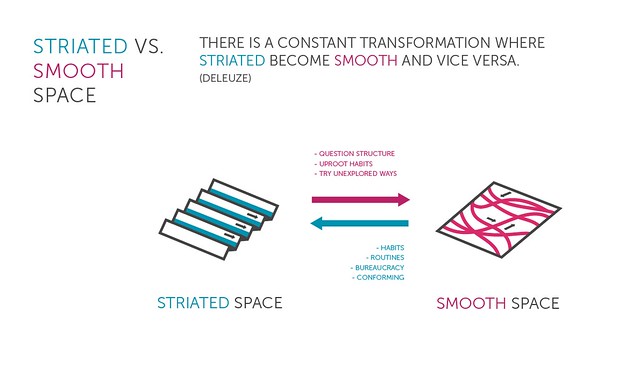I was happy to start school 1990, before the internet revolution. School was better back then. Probably not better in absolute term but it was better because is was better aligned to the current society. School today have developed but it has failed to keep up with internet, globalism and changed job markets.
Knowledge are more and more accessible. The Teachers role with lecturing have more and more became obsolete. The way alternative education uses teachers as facilitators seem to work better and are more aligned with how society develops…
SO WHAT IS THE PROBLEMS WITH EDUCATION TODAY?
-
Why is young people today find schooling unnecessary or uninteresting?
-
Is school preparing us to identify and solve complex problems creatively (ourselves or in group?) How can we solve that?
-
How can we transform the school system from a system that today create extrinsic motivation (based on rewards & grades) to a system where youngsters can keep, find & shape intrinsic motivation (curiosity, self-guided, self-motivation)?
-
How can school prepare people to adapt to many possible future scenarios? Not just for the current paradigm. And not just be flexible in the way current leaders or employers want?
-
How can we create a school that help students to understand themselves and how they can become citizens so they can be a part of society?
-
How can school today create students that solve tomorrow’s problems?
EDUCATION OF TOMORROW (TODAY)
During the last years I’ve been involved in many education projects. Everything from design workshops and courses myself to summarizing education methodologies, working with graduates Kaospilots & D-school, collecting stories of how creatives learn through Project of How to interviewing people in India how traditional vs alternative indian education fit together with creativity and how the education system shaped artists, authors & film makers. The later as a pre-study to Andaman Visions. Through that work many interesting examples have appeared, and I want to share some of them with you.
Example 1.
- Many alternative educations have rethought ‘problems’ universities have today. Eg.
- Lack of process follow-ups. Learn how to manage group work, give feedback, handle conflicts, learning based on reflection.
- Too much extrinsic based. Grades.
- Too formatted. You can’t be creative within the system. Take the APA formatting eg.
- Focus on results and not learnings.
- People do not dare to try the crazy because of grades. Therefore people safeguard and conform to the standards.
Example 2.
- The classic roles of the teachers have been divided. (Kaospilots/Hyper Island)
- Facilitators help in feedback sessions in group based work. The might come in into groups to help with conflict management, be an outside discussion partner..
- Experts. Lecturer and workshop holders that are best within their fields come and give input to the students.
Example 3.
School is focused on problem-based learning in groups.
- Self organised group work
- Input from experts (lecture or workshop format)
- Process: feedback, evaluation and reflection Session with a facilitator.
During the last years education system have changed tremendously. Teachers have gone from delivering truth to being facilitators of opinions & knowledge. That also mean that the role of the teacher is more important. The more advance education get, The more advanced and skilled the teachers have to be, but in a different way. I would say that’s one of the loopholes with the new school systems. Often students are left in self organized groups without a good facilitation.
Example 4.
The whole Finnish public school system is so called alternative education
Finland’s education system is one of the most well performing in the world. In comparison to most EU countries. Finland moved in a different direction in the 90s.
Finland have…
- No standardized, provincial or census based testing
- No national testing
- No private schools
- No word for 'accountability' in Finnish language, rather responsibility is important when gauging success
- Schools have autonomy
- Teacher training able to select best students among high-school graduates, because teaching is so popular among young people
- Teaching seen as an attractive profession - on par with lawyers etc.
The results in Swedish schools are plummeting. The swedish system seems like an opposite to Finland’s. Sweden have a wide spectrum of private schools, national & standardized tests and being a teacher is not seen as attractive.
Based on:
-
http://www.quora.com/How-does-the-Finnish-educational-system-work/answer/Joel-Buxton
-
http://www.opetushallitus.fi/english/publications/2009/national_core_curricula_for_basic_education
-
Pasi Sahlberg on the Finnish Education System http://youtu.be/1CLdY9AAqI4
Summary
Teacher should help students to be navigators and explorers of knowledge, informed citizens and skilled actors in large and small groups.
- Put metacognition on the agenda! Learning about learning. (Prof Stephen Heppell talks about 20% better learning)
- Education in collaboration, conflict management (eg. feedback) & group dynamics.
- Society today is more complex therefore we need less time on separate disciplines and more time on exploring and being interdisciplinary. There’s where new thinking happens at the moment. Disciplines have been explored for 100 years now. The new things happen in the interdisciplinary and the interinterdisplimary.
- As indian Miramika. School should focus as much on intutive thinking, intrinsic motivation & guidance as it focus on the rational logical mind.
Also to see how school can combine creative & intuitive ways of thinking with the classical role of rational thinking. I think we need more takes on how school can create free-thinking students that can solve future’s problems. Deleuze talks about the philosophic term striated & smooth space. A thinking that can be applied to the learning experience. Schools needs to be combined the two parts to stimulate and create free thinking on one hand (smooth spaces, eg. idea generations) but on the other hand learn students rational thinking, relate to preset frames and source criticism. (striated space).
/Ola Möller, @olamoller

